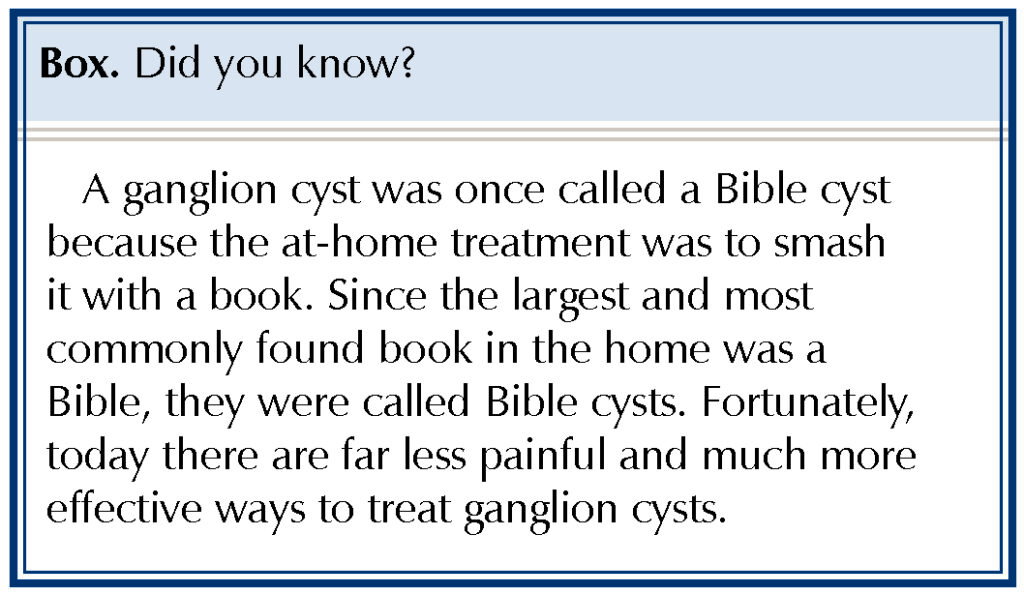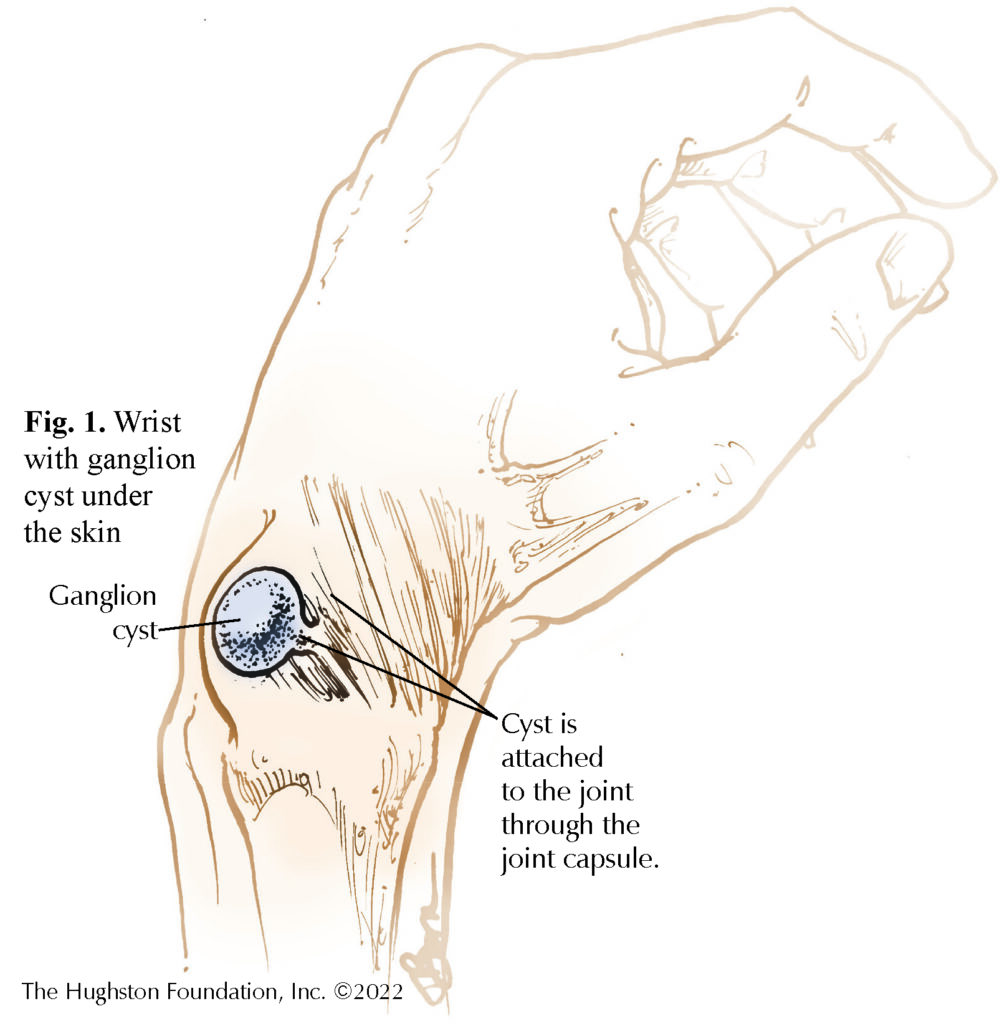
Ganglion cysts, sometimes called Bible cysts or Bible bumps (Box), are fluid-filled masses that can cause pain and discomfort. They can be as small as a pea or as large as a golf ball. These cysts are noncancerous, can change in dimension and shape, and do not move. Although wrists, hands, and ankles are the most common sites, ganglion cysts can form at any major joint in your body (Fig).

How do I know I have a ganglion cyst?
Typically, ganglion cysts are round and form over the wrist. If you press on the mass, it can feel soft or firm and it moves very little. Inside the cyst is a thick, sticky, clear jellylike fluid. On the outside, the color of the cyst blends in with the surrounding skin. If it is small enough, it can go unnoticed for months or years before it becomes bothersome; however, if the ganglion cyst is near a nerve, pressure-causing pain, numbness, and even muscle weakness can result. The swelling can appear over time or suddenly and it may shrink in size or even go away and come back.
Why do they form?
Although the exact mechanism for how a ganglion cyst forms is not known, a likely reason is that they arise from the leakage of synovial fluid around a joint, which ultimately accumulates to form a ganglion cyst.¹ Synovial fluid is a thick, clear liquid that lubricates the joints in our body and helps them move smoothly. The fluid is held in place by a wall called the joint capsule. With repetitive microtrauma, the wall can begin to breakdown and the fluid escapes into the surrounding joint. As more and more fluid begins to accumulate, a ganglion cyst can start to grow. At first, the bump may not be noticeable or bothersome in the early stages. Once it starts to increase in size, the ganglion cyst can start putting pressure on the joint, potentially causing pain and reduced joint mobility.
What treatment options are available?
If a mass appears, you should seek early diagnosis and treatment, even if it is not bothering you. There are various options in the approach on managing a ganglion cyst. If the lump is small and does not cause any symptoms, your doctor may suggest watching and waiting before taking any medical intervention. It is estimated that up to 50% of ganglion cysts will resolve on their own without the need of medical assistance.² It can take several months before the mass decreases in size.
If the cyst begins to grow or starts to become painful and troublesome, medical intervention can help. Your doctor may recommend the use of a brace or splint to immobilize the affected area. This prevents further microtrauma to the wall of the joint capsule and stops more fluid from accumulating. Your physician may aspirate the cyst, using a needle to remove the excess fluid from the mass. Although the procedure reduces the size of the cyst immediately, it is not a definitive treatment because a ganglion cyst treated in this manner may recur. If nonsurgical treatments have failed or the mass returns, your doctor may recommend surgery.
Typically, your doctor will recommend surgery if aspiration did not help, if the mass is painful and interferes with your daily functions, or if it causes tingling or numbness in the hands or fingers. A surgeon can remove the cyst and the surrounding tissue that attaches it to the joint on an outpatient basis with minimal complications. Although rare, complications include continued pain even after surgical removal, weakness to the surrounding joint, and recurrence. If you believe you have a ganglion cyst, consult with your doctor for proper diagnosis and management.
Author: Alejandro Gonzalez Espinoza, BS | Columbus, Georgia
References
- Gregush RE, Habusta SF. Ganglion Cyst. In: StatPearls. Treasure Island (FL): StatPearls Publishing; July 20, 2021.
- Gude W, Morelli V. Ganglion cysts of the wrist: pathophysiology, clinical picture, and management. Curr Rev Musculoskelet Med. 2008;1(3-4):205-211. doi:10.1007/s12178-008-9033-4
Last edited on December 22, 2022
